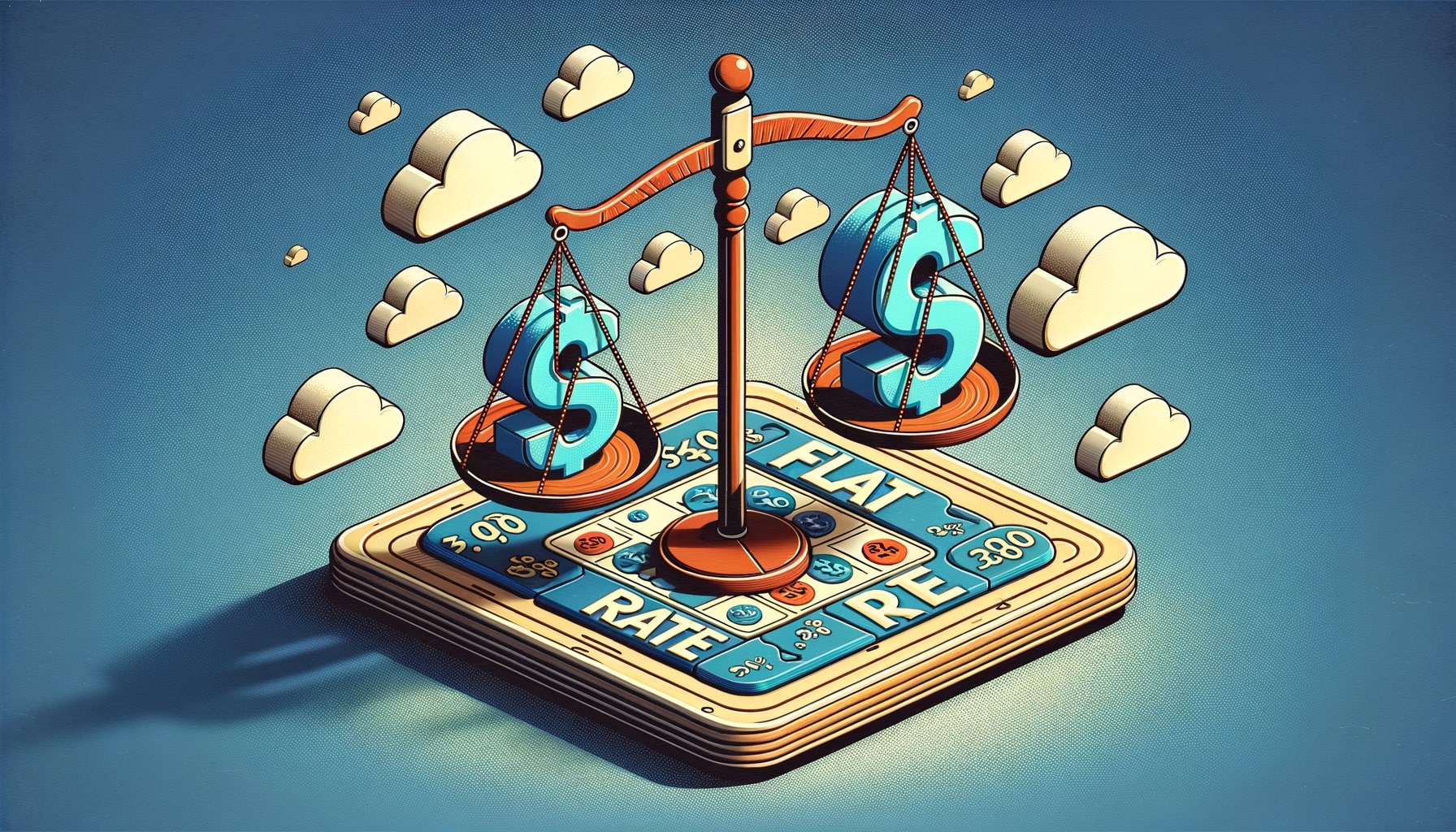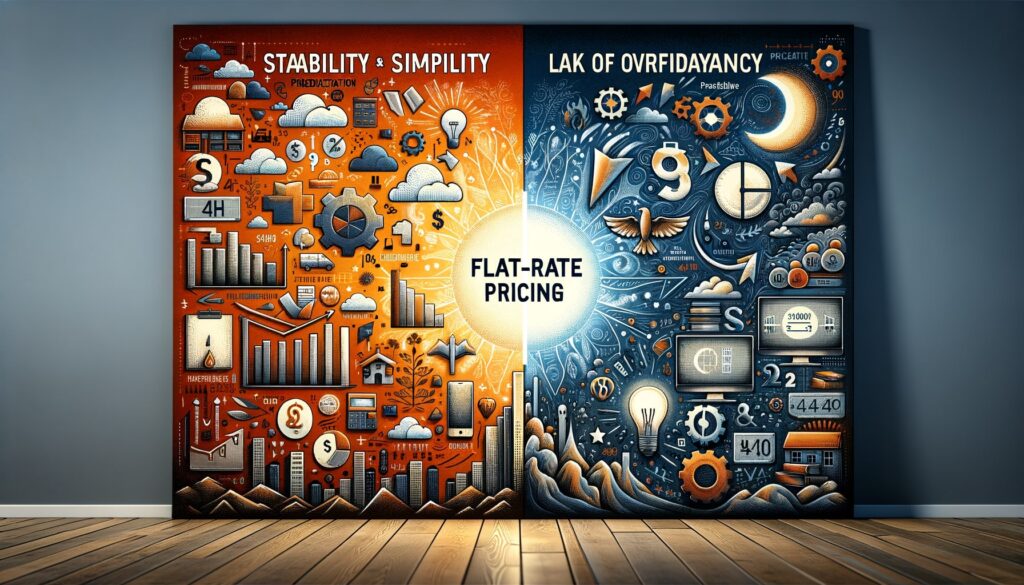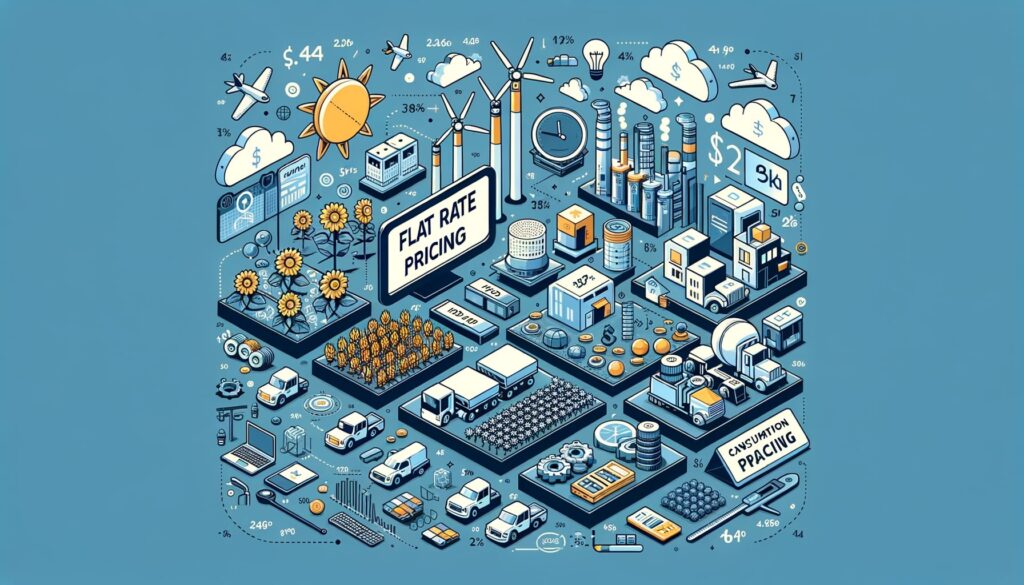
By American November 18, 2024
Flat rate pricing is a pricing strategy that involves charging customers a fixed fee for a particular product or service, regardless of the actual cost or time involved in delivering it. This approach is in contrast to other pricing models, such as hourly rates or cost-plus pricing, where the price is determined by the time or resources spent on the job.
The concept of flat rate pricing has been around for decades and is widely used in various industries, including home services, automotive repairs, and professional services. It offers several benefits for both businesses and consumers, but it also has its drawbacks and challenges.
Advantages and Disadvantages of Flat Rate Pricing
One of the main advantages of flat rate pricing is its simplicity. Customers know exactly how much they will be charged upfront, which eliminates any surprises or uncertainties. This transparency can help build trust and improve customer satisfaction. Additionally, flat rate pricing can incentivize efficiency and productivity, as businesses are motivated to complete jobs quickly to maximize their profits.
Another advantage of flat rate pricing is that it can lead to increased sales. Customers may be more willing to purchase a product or service if they know the exact cost upfront, rather than being uncertain about the final bill. This can help businesses attract more customers and increase their revenue.
However, flat rate pricing also has its disadvantages. One of the main challenges is accurately determining the flat rate for each product or service. Businesses need to consider various factors, such as labor costs, material costs, overhead expenses, and desired profit margins. If the flat rate is set too low, the business may not cover its costs and end up losing money. On the other hand, if the flat rate is set too high, customers may perceive it as unfair and choose competitors who offer more competitive prices.
How Does Flat Rate Pricing Work in Different Industries?
Flat rate pricing is used in a wide range of industries, each with its own unique considerations and challenges. In the home services industry, such as plumbing, electrical work, or HVAC repairs, flat rate pricing is commonly used. Service providers typically have a catalog of services with fixed prices based on the type of job, complexity, and estimated time required. This allows customers to know the cost upfront and make informed decisions.
In the automotive industry, flat rate pricing is prevalent in repair shops. Mechanics use industry-standard guides, such as the Mitchell or Chilton labor time guides, to determine the flat rate for each repair job. These guides provide estimates of the time required to complete specific tasks, and the mechanic charges a fixed rate based on that estimate. This approach ensures consistency and transparency in pricing.
Professional services, such as legal or accounting services, can also benefit from flat rate pricing. Instead of charging clients by the hour, professionals can offer fixed fees for specific services, such as drafting a contract or preparing a tax return. This allows clients to budget their expenses and eliminates the uncertainty associated with hourly billing.
Key Factors to Consider when Implementing Flat Rate Pricing
Implementing flat rate pricing requires careful consideration of various factors to ensure its effectiveness and profitability. One of the key factors is accurately estimating the time and resources required for each job. This involves analyzing historical data, conducting time studies, and considering any potential variations or contingencies.
Another important factor is understanding the market and competition. Businesses need to research their competitors’ pricing strategies and ensure that their flat rates are competitive. It is also crucial to consider the target market’s willingness to pay and their perception of value. Conducting market research and gathering customer feedback can provide valuable insights in this regard.
Additionally, businesses should consider their cost structure and profit margins when setting flat rates. It is essential to calculate all the direct and indirect costs associated with delivering the product or service, including labor, materials, overhead expenses, and desired profit margins. This analysis will help determine the minimum flat rate required to cover costs and generate a reasonable profit.
Common Misconceptions about Flat Rate Pricing
There are several common misconceptions about flat rate pricing that need to be addressed. One misconception is that flat rate pricing is always more expensive for customers compared to other pricing models. While it is true that flat rate pricing can sometimes result in higher prices, it is not always the case. Flat rate pricing can actually be more cost-effective for customers in certain situations, especially when the actual time or resources required for the job are less than the flat rate.
Another misconception is that flat rate pricing encourages inefficiency and shortcuts. Some argue that if service providers know they will be paid a fixed fee regardless of the time spent, they may rush through the job or cut corners to maximize their profits. However, this is not necessarily true. Flat rate pricing can actually incentivize efficiency and productivity, as businesses are motivated to complete jobs quickly to maximize their profits.
Exploring the Pros and Cons of Flat Rate Pricing for Consumers
For consumers, flat rate pricing offers several advantages. One of the main benefits is transparency. Customers know exactly how much they will be charged upfront, which eliminates any surprises or uncertainties. This transparency can help build trust and improve customer satisfaction. Additionally, flat rate pricing allows customers to budget their expenses more effectively, as they know the cost upfront and can plan accordingly.
Another advantage for consumers is the potential for cost savings. In some cases, flat rate pricing can be more cost-effective compared to other pricing models. For example, if a service provider estimates that a job will take four hours but completes it in three, the customer still pays the same flat rate. This can result in savings for the customer, as they are not charged for the actual time spent on the job.
However, there are also potential disadvantages for consumers. One of the main drawbacks is the lack of customization. With flat rate pricing, customers may not have the option to tailor the service to their specific needs or preferences. This can be a disadvantage for customers who have unique requirements or want more personalized service.
Another potential disadvantage is the risk of overpaying. If the flat rate is set too high, customers may end up paying more than the actual cost or value of the product or service. This can be a concern for price-sensitive customers who are looking for the best deal.
How to Determine the Right Flat Rate Pricing Model for Your Business
Determining the right flat rate pricing model for your business requires careful analysis and consideration of various factors. One approach is to analyze your cost structure and profit margins to determine the minimum flat rate required to cover costs and generate a reasonable profit. This involves calculating all the direct and indirect costs associated with delivering the product or service, including labor, materials, overhead expenses, and desired profit margins.
Another approach is to research your competitors’ pricing strategies and ensure that your flat rates are competitive. This involves analyzing the market and understanding the target market’s willingness to pay and their perception of value. Conducting market research and gathering customer feedback can provide valuable insights in this regard.
Additionally, it is important to consider the specific characteristics of your industry and the nature of your business. Some industries may have industry-standard guides or benchmarks that can help determine flat rates. For example, in the automotive industry, mechanics can use labor time guides to estimate the time required for each repair job and set flat rates accordingly.
Frequently Asked Questions
Q1. What is the difference between flat rate pricing and hourly rates?
Flat rate pricing involves charging customers a fixed fee for a particular product or service, regardless of the actual cost or time involved in delivering it. Hourly rates, on the other hand, involve charging customers based on the time spent on the job. Flat rate pricing offers transparency and certainty, while hourly rates can be more flexible but may result in uncertainties and surprises.
Q2. How do businesses determine the flat rate for each product or service?
Businesses determine the flat rate by considering various factors, such as labor costs, material costs, overhead expenses, and desired profit margins. This involves analyzing historical data, conducting time studies, and considering any potential variations or contingencies.
Q3. Can flat rate pricing be more cost-effective for customers?
Yes, flat rate pricing can be more cost-effective for customers in certain situations. If a service provider estimates that a job will take a certain amount of time but completes it more quickly, the customer still pays the same flat rate. This can result in savings for the customer, as they are not charged for the actual time spent on the job.
Q4. Does flat rate pricing encourage inefficiency and shortcuts?
No, flat rate pricing does not necessarily encourage inefficiency and shortcuts. In fact, it can incentivize efficiency and productivity, as businesses are motivated to complete jobs quickly to maximize their profits.
Conclusion
Flat rate pricing is a pricing strategy that offers several benefits for both businesses and consumers. It provides transparency, certainty, and cost savings for customers, while also incentivizing efficiency and productivity for businesses. However, implementing flat rate pricing requires careful analysis and consideration of various factors, such as cost structure, market dynamics, and industry benchmarks.
By understanding the basics of flat rate pricing and considering the specific needs of their business, businesses can determine the right flat rate pricing model and achieve success in their respective industries.




